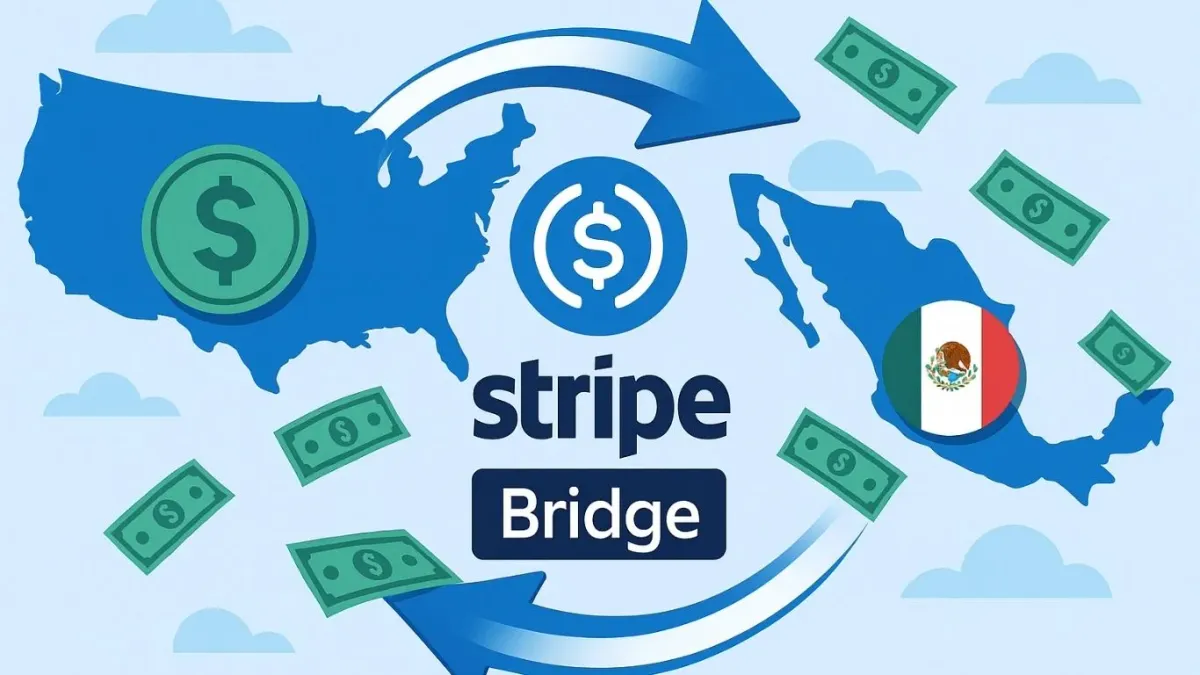Zach Abrams, an engineer on Stripe’s crypto-payments team, shared that Stripe moved 14 million USD to Mexico using USDC instead of traditional cross-border banking methods.
He posted the transfer on X along with evidence from on-chain data and pointed to the performance difference, conventional international wires settle in about two business days while Stripe’s stablecoin method completed in less than two hours.
stripe moved $14M to Mexico using @Stablecoin
— Zach (@zcabrams) November 20, 2025
traditional rails: T+2 days
bridge: <2 hours
corporate treasury is one of the largest unlocks for stables—we're finally upgrading global treasury flows from dial-up to fiber pic.twitter.com/UUB6Al3s1J
How Stripe Executed The Transfer
The transfer ran through Bridge, the cross-border settlement product owned by Stripe. Bridge is designed to route funds across currencies and banking systems by using stablecoin liquidity as the transport layer. Businesses receive fiat in the destination country while the cross-border movement happens through blockchain settlement.
Bridge operates by holding licensed treasury infrastructure and using USDC streams on supported chains, then converting the received amount into domestic currency at regulated endpoints.
Stripe positions Bridge as a tool to move money faster without exposing businesses directly to crypto operations, private keys or wallet management.
Cross-border payments remain one of the slowest components of global finance. Banks still rely on correspondent networks, overnight queues and batch clearing. A transfer from the United States to Mexico through traditional rails often requires T+2 settlement, multiple intermediaries and higher fees.
By completing the transfer in under two hours, Stripe illustrated how stablecoin-based settlement can close liquidity gaps and reduce friction that businesses face when paying partners, contractors or suppliers. This approach also scales across time zones and weekends, which is useful for companies with fast-moving cash-flow requirements.
What Else to Know
Stripe re-entered the crypto space in 2024 after pausing earlier experiments. It began by enabling USDC payouts for global creators, followed by adding stablecoin acceptance for merchants. Bridge became the core part of its settlement stack as Stripe shifted toward building programmable treasury tools for enterprises.
The broader payments industry is moving in this direction. Companies like Revolut, Coinbase, Circle and newer fintechs have been pushing stablecoin settlement for remittances and treasury operations.
Stripe brings a contrasting scale, its infrastructure touches millions of merchants, giving stablecoin settlement a pathway into mainstream commerce without requiring businesses to interact directly with crypto rails.
Industry-Wide Impacts
If Stripe continues to route cross-border flows through stablecoin infrastructure, costs for international transactions could fall while settlement speeds rise.
This could influence how marketplaces manage vendor payouts, how SaaS platforms handle global disbursements and how banks approach treasury innovation. It may also push regulators to clarify frameworks around stablecoin transport when the endpoints remain fully compliant fiat rails.
Next Steps & Final Thoughts
Stripe is expected to expand Bridge across more corridors beyond the United States and Mexico, particularly in regions where legacy rails create bottlenecks. Upcoming statements from Stripe may outline additional supported currencies, settlement time benchmarks and integration paths for enterprise clients.
Stripe’s 14 million USD transfer to Mexico using a stablecoin channel offers a clear example of how global settlements can work outside slow banking networks. By using Bridge and USDC, the company demonstrated a practical step toward faster, programmable and more efficient international money movement.






